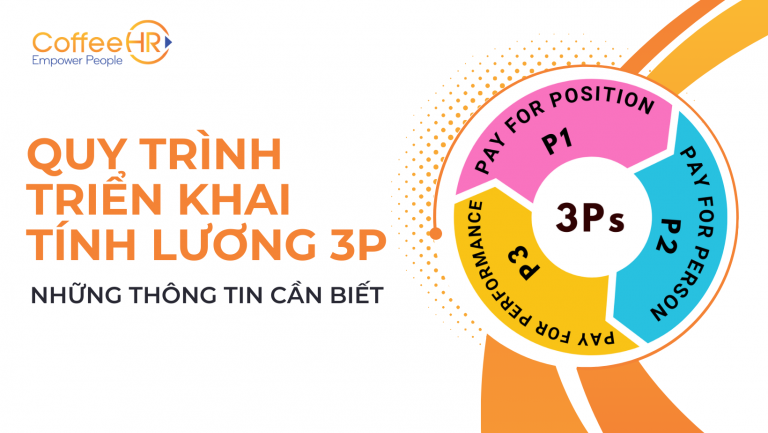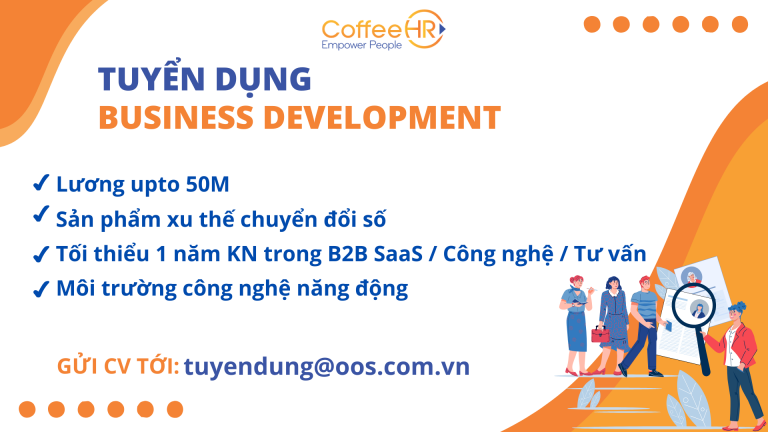Six Sigma is one of the most influential methods in almost every field such as healthcare, finance… including Fortune 500 companies worldwide. So What is Six Sigma, benefits that Six Sigma brings to businesses, steps to apply Six Sigma effectively. CoffeeHR gives you all the information about Six Sigma in the article below.
What is Six Sigma?
Six Sigma (6 Sigma, or 6σ) is a system that includes tools and methods for business process improvement, quality management through finding the cause of defects (defects) and handling at an early stage to increases the accuracy of the process.

Six Sigma is not a standard system for assessing quality like ISO 9001. Applying this methodology helps businesses form a new way of thinking: focus and invest in process improvement to avoid problems Errors may occur instead of focusing on handling defective products, creating stability in the production process and business operations of the enterprise.
What is Six Sigma?, is to use statistical methods to detect the number of defects arising in a production process, thereby finding ways to fix it, bringing it close to the "zero error" level. A business wants to achieve Six Sigma criteria only if the process does not contain more than 3.4 defects (or defects) per 1 million opportunities (products).
In fact, a Six Sigma process is as accurate as 99.99966%. The Six Sigma process is divided into the following stages:
| STT | Sigma level | Error in 1 million products | Error in percentage |
| 1 | One Sigma | 690.000 | 69,0% |
| 2 | Two Sigma | 308.000 | 30,8% |
| 3 | Three Sigma | 66.800 | 6,68% |
| 4 | Four Sigma | 6.210 | 0,621% |
| 5 | Five Sigma | 230 | 0,023% |
| 6 | Six Sigma | 3,4 | 0,0003% |
Six Six Sigma levels corresponding to standard deviations
What is the difference between Lean Sigma and Six Sigma?
Lean is a system of tools that focuses on avoiding the elimination of all waste and irrationality in the production process. The main purpose is to direct all activities of the organization in the direction of “lean”. Lean is a production method initiated by Toyota Japan.
What is Lean Six Sigma?? Lean Six Sigma (LSS) is a variant of Six Sigma. This is a management model that combines Lean management principles with Six Sigma methodology. They go hand in hand and bring about positive change. At the same time, bring a perfect production process and business operation to the enterprise with the principle of minimizing waste and shortening the production cycle from the very beginning.

6 Benefits of Six Sigma methodology for businesses
Some people see Six Sigma as a method favored by large corporations, but there are also few who think this method is only for small organizations that are just starting to build business processes. However, experts assert that Six Sigma benefits all organizations in all sectors. Main benefits of What is Six Sigma?? Here are six key business benefits:
Maintain customer loyalty
Because of the focus on understanding customer requirements, Six Sigma Very customer oriented. Not only will your product not make mistakes, but your product will also meet the needs of the user – a factor that helps keep loyalty.
To achieve this, you can do surveys or study customer behavior. From there, you'll understand your customers' requirements and figure out how to improve your product.
Reduce costs, increase profits
When the error rate (defect) is reduced and does not recur in the future, it means that your business can eliminate unnecessary waste such as labor, materials, time and costs. In addition to the things businesses create that only include sold products, the cost of goods sold per unit of product will be reduced and profits will increase.

>>> See more: Kaizen method what? The benefits of the Kaizen method
Improve corporate culture
An effective work process is an effective link between employees and businesses. In the Six Sigma methodology, people are an important factor that is promoted, not inferior to technology.
Furthermore, Six Sigma helps to resolve conflicts arising in business processes thanks to a transparent measurement method. This makes it easy for managers to orient employees, no matter what type of corporate culture they follow.
Try to make a simple comparison: Between an organization with well-organized processes and a group of people who often do not clearly define jobs, where would your employees want to join?
Strategic planning
In any strategic vision, What is Six Sigma? plays a very important role. After announcing the mission, goals and SWOT analysis, then Six Sigma helps businesses focus on areas that need improvement.
>>> See more: Don't miss: Canvas Model what? 9 Pillars of Effective Canvas Modeling
Business expansion
Once you have successfully eliminated error sources and built a Six Sigma process, you will no longer have difficulty in any project to scale up production as well as the associated measurement system.
Real-life examples of the benefits of the Six Sigma methodology
Speaking of practical examples, Motorola and General Electric must be mentioned first. From 1995-2000 General Electric applied the Six Sigma methodology and saved $12 billion. And Motorola – the originator and developer of this method system has saved itself 17 billion dollars.

In Vietnam, Ford Vietnam Company in the period 2000-2007 applied Six Sigma for 200 improvement projects in all business areas. As a result, $1.2 million was saved, of which the customer satisfaction index reached over 90%/year.
In particular, in 2005 Ford Vietnam succeeded in reducing the number of containers carrying imported components after applying Six Sigma. After arranging and improving according to Six Sigma method, Ford found the cause of waste. This saves Ford $150,000 and contributes to increased profits for the parent company.
See more Video What is Six Sigma?
Principles of the Six Sigma methodology
The following are the principles of Six Sigma method help improve business process efficiency in the enterprise.

Always customer oriented
Like many other business philosophies, Six Sigma focuses on Customers' voice - the voice of customers. The requirements and wishes of customers are received by the enterprise so that the company can modify and improve the process to reach the standard level, bringing good quality products and services to customers.

Emphasize data and facts
Before making a decision, businesses need to answer the following two questions:
- What data/facts are really necessary for your business?
- How to apply the data to Six Sigma effectively?
All information is used to apply the methodology What is Six Sigma? which is not based on speculation but needs to be precisely measured.
Proactive management
As mentioned in the definition, the Six Sigma methodology focuses on finding and handling errors in order to increase the accuracy of the process. From there, proactively handle and prevent the creation of defective products.
Collaboration without barriers
To be able to create a smooth process from the beginning, the Six Sigma system follows the principle of unlimited collaboration between departments in the enterprise, including all verticals, horizontals and diagonals.
Aim for perfection but still allow some mistakes
The standard of Six Sigma is that there are no more than 3.4 errors per 1 million opportunities, which is not exactly 100%. Therefore, businesses should not be in a hurry to be absolutely perfect right from the start. Because improvement plans are allowed to fail, as long as the consequences are limited and the business must learn lessons later.
Procedure 5 DMAIC step whenApply Six Sigma in the business

The most basic process to apply the system Six Sigma method Into almost any type of business is the traditional 5-step DMAIC process:
- D – Define: is the step to judge the customer profile and understand the requirements for product and service quality. From there, businesses self-assess how their products have achieved, need to determine Identify key business areas to apply Six Sigma.
- M – Measure: This is the stage where data collection, assessment and identification of problems are initiated so that the cause of the defects can be found.
- A – Analyze: is to clearly identify the gap between the goals and the results of the current work, as well as the opportunities for the business. Solutions will be provided provided that the wording has been strictly checked and preventive measures are in place.
- I – Improve: In the advanced application stage, at this stage, businesses need to closely monitor so that they can promptly make additional decisions or change when necessary.
- C – Control (Control): This is the last step of the process. Is a plan to monitor and control goals to help businesses stay on track and avoid making old mistakes or going in the wrong direction.
>>>For more information:
- Model BSC in business management and operation
- What is Kanban?? Kanban method in work management
- What is Pipeline?? 5 Important Stages of the Pipeline Process
END
Six Sigma is a business process improvement methodology that helps businesses reduce errors to achieve the best results. However, businesses need to thoroughly learn about Six Sigma, as well as prepare contingency plans to successfully apply this method. Hope the above article has helped you to understand the concept What is Six Sigma? and how to apply this method to your business in the most effective way.
CoffeeHR has more than 10 years of accompanying many businesses and corporations. Contact now to Get FREE DEMO Administration Software for your Business.
Hotline: (+84) 97 306 0459
Facebook: CoffeeHR – Human Resources Coffee























